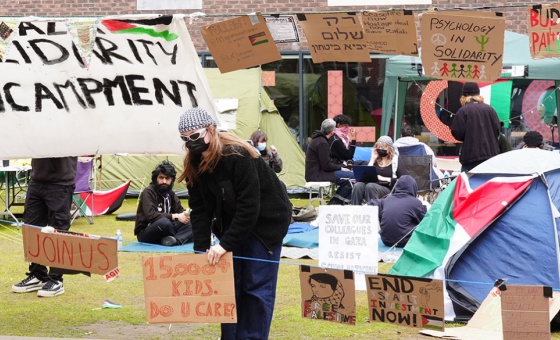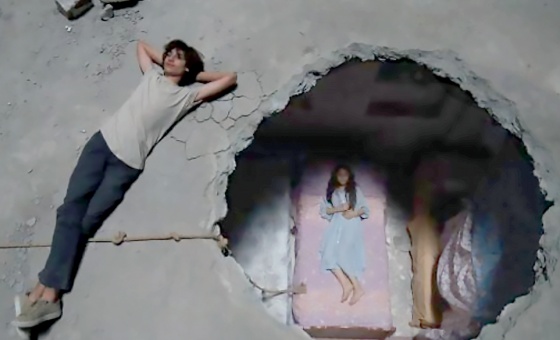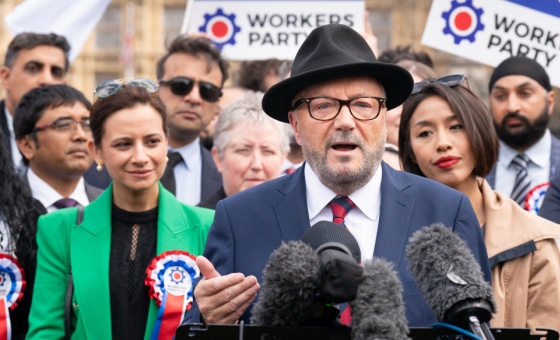This is the last article you can read this month
You can read more article this month
You can read more articles this month
Sorry your limit is up for this month
Reset on:
Please help support the Morning Star by subscribing here
THEY say there are no winners of war or losers of peace. For anti-war campaigners there are no truer words. But in terms of those thriving on war, there must be a loser.
Every battle is judged on what is gained and lost, first measured on a military and then a political scale. The side which has lost the most soldiers, the most land and the most rights is the one seen as defeated in battle.
But in this cold assessment of war, there are no people. There are statistics, agreements and negotiations. It doesn’t take into account the human suffering, poverty and loss of life.
Because whichever side wins, it is the people that lose. And to talk about this means pulling back the curtain to expose the real objectives of war.
When it is necessary to make people an integral part of the war, the weapon of propaganda once again closes the curtains tight. And this leads those losing to once again be defeated on the front line.
And it is always women who lose the hardest.
It is always those who lose their lives on the battlefield that are made the faces of war. But those who remain behind are made to look the fortunate ones under the facade that they are alive, hiding their suffering.
So who are the ones on the home front? Women, children, the disabled and those who refuse to fight — if that option remains available. And as children and the disabled are in need of care, it often falls to women to fill the void of the men’s departure.
Women continue to do the tasks that are expected of them as well as trying to fill the places left empty by the war, along with holding on to the sanity to keep living.
We already know of the millions of people who have died on the front line. Undoubtedly one of the greatest tragedies being the second world war.
All of the work done in daily life, is also of course a vital necessity during war. In the second world war, who cooked the bread replacing the baker?
And who distributed the mail in place of the postman who dropped his bag and replaced it with a rifle? And who filled the vacant spaces at the factory benches?
Previous battles showed that war was not only carried out on the battlefield, but the home front was also vital in winning the war.
The government took steps specifically towards the home front during the second world war. It is on this front, which is relatively distant from the smell of gunpowder and blood, that women are involved in the war.
There is a poster that summarises the situation perfectly: instead of the man who went to the front line, it shows a woman wearing her jumpsuit and preparing to go to the factory.
As the man leaves the house, the woman wears a man’s apron simultaneously. The secret message of the poster is the pure joy on both of their faces. It is like they are doing a normal division of work and they are happy about it.
The ministry did not neglect using propaganda posters to call on women to carry out wartime duties as well as completing their jobs in the home, just as they had done to call for men to join the army.
A poster which tells women to eat less and feed more is the most vivid example of this. There are posters to say the road to victory passes through the kitchen, and because it is a faster source of energy and cheaper, more potatoes should be consumed. And in fact they should be growing them themselves.
It’s a woman who needs to meet the needs of hunger, famine and poverty.
Other roles were also considered for those who cannot do any of these things such as participating in social and voluntary activities, showing support, driving ambulances and distributing soup.
It is the truth of all wars that responsibility falls on women to fill the empty spaces when men go to the front line.
There is a monument in London unveiled in 2005 which expresses this. The monument stands with great delicacy where it cannot be missed at a spot in Whitehall, one of the busiest areas in London and the heart of the British government.
The artist has symbolised the women in the uniforms of the roles they took over to fill the voids left by the men.
But there are no women in the sculpture, just the uniforms. We can only imagine the women, who have been ripped from their homes, their partners, and families, inside the empty uniforms. Now they’re gone.
This pitch black monument fills you with heavy grief while calling for a tribute to the women in the war. But the question the hollow uniforms leave behind remains.
What do you think happened to the women’s working life after the war when the men returned home? The artist is making an unfortunate statement here.
Sculptor John Mills was inspired after seeing a 1940s photograph of a cloakroom at a dance hall.
“The picture just sparked an idea in my mind which I couldn’t get away from.
“I was interested in the concept of these women hanging up their uniforms and going back to their normal lives after the end of the war.”
The problem begins when the artist stops caring. The women who were called to fill a void were then abandoned in another void.
Since the beginning of class society, the location and identity of women is a large void, but they are valued in respect of their absence, when they are transformed into abstract visions.
They were defined in the disguises, not their real assets, and they were sent back to their spaces when they were done. Do you not think there were any women who refused to return, anyone who showed resistance?
We still share the responsibility of their experiences in struggle.
What the war reveals is just one of the eternal forms of oppression.
When the men returned to their homes, tired and weary, many of the women who shouldered the burden of war silently retreated back to their chambers like proud mothers, like millions of women toiling in their own home day and night without complaining.
The uniforms on the black monument will continue to symbolise women’s souls thrown into the void until the full liberation of women is fulfilled.











